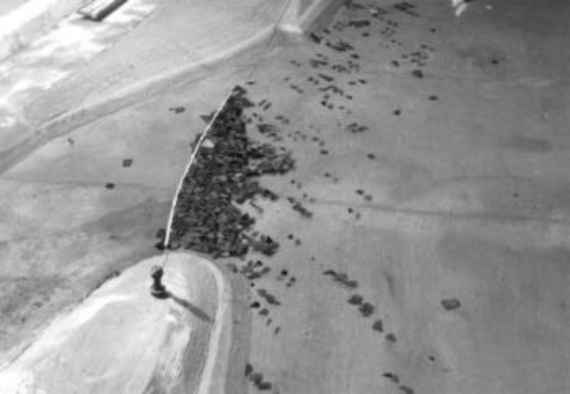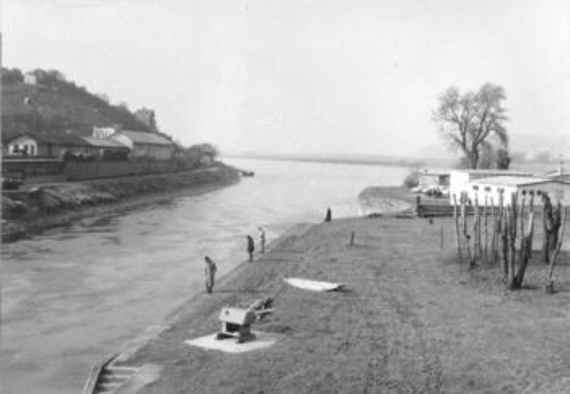For the cooling water abstraction of the thermal power plant Simmering located at the Danube Canal, a water discharge of 50 m³/s has to be guaranteed at the Nussdorf weir. In the past the ice regime in this area lead to difficulties in the operation of the plant. Due to rafting of timber the Danube Canal inlet was constructed funnel-shaped, which - especially at certain wind conditions - promotes the floating of ice into the bay and in front of the weir, so it is no longer possible to withdraw the required discharge for the thermal power plant.
The started project aims to prevent this ice formation at the Danube Canal bifurcation.
The physical model resulted in the recommendation of a bank modification upstream of the Danube Canal bifurcation. Furthermore, a provision of ice trees in the Danube Canal was proposed to prevent the ice floes from floating through the Danube Canal and reducing the discharge (constriction of the outlet section).
View of Nussdorf
Physical model with modified bifurcation and floating chain



